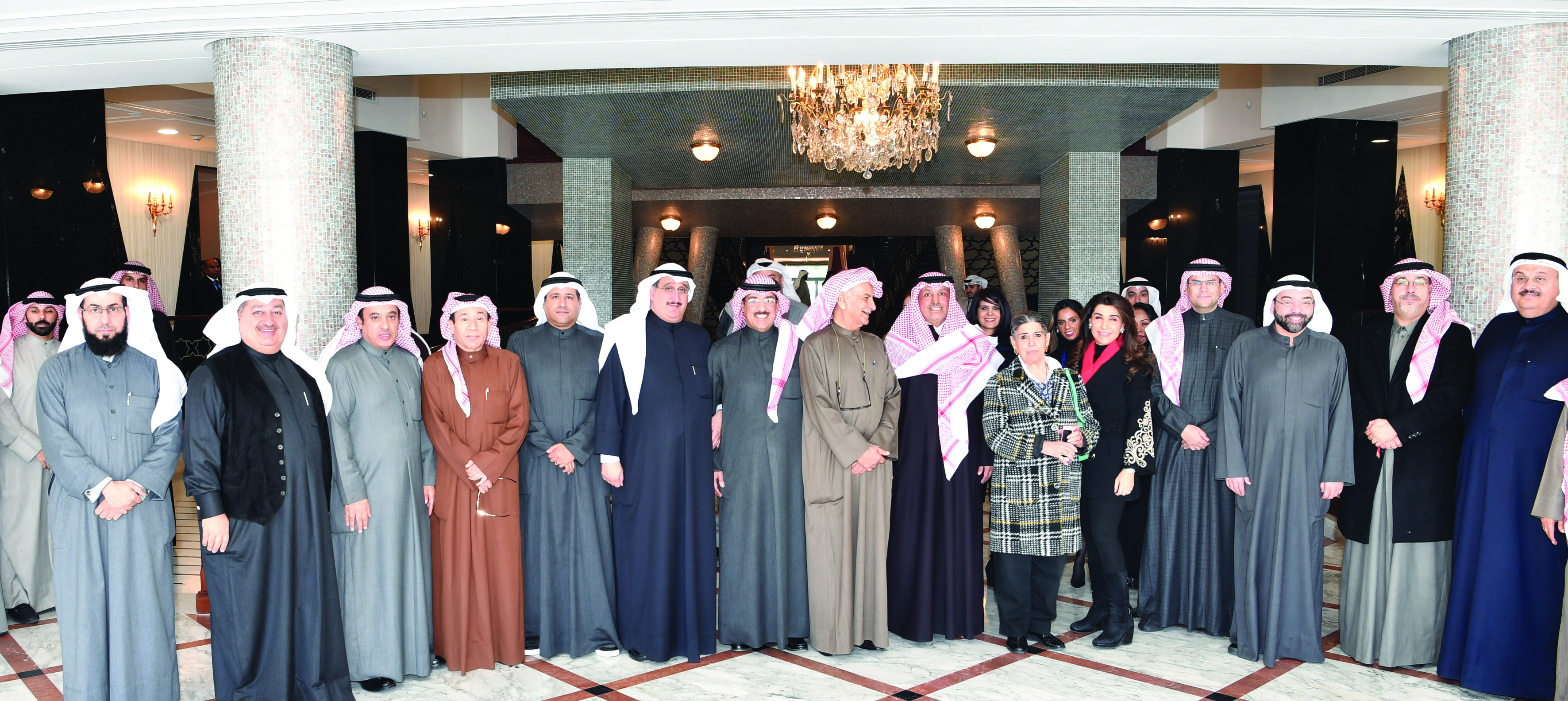
KUWAIT: As the opening of Al-Salam Palace to the public draws near, a media delegation visited the palace and was received by Amiri Diwan's Head of Administrative and Financial Affairs Abdelaziz Ishaq, Head of Media and Cultural Affairs Yousuf Al-Roumi, Head of Historic Documents, Museums and Libraries Sheikha Muna Al-Jaber, Sheikh Jaber Fahd Al-Sabah, as well as Information Ministry Assistant Undersecretary for Foreign Information Faisal Al-Mutallaqim.
The delegation included editors-in-chief of local papers, including Kuwait Times' Abd Al-Rahman Al-Alyan, Ahmad Al-Jarrallah (Al-Seyassah), Waleed Al-Nisif (Al-Qabas), Yousuf Al-Marzouq (Al-Anbaa), Waleed Al-Jassem (Al-Rai), Emad Bukhamseen (Annahar) and Adnan Al-Wazzan (Al-Wasat), Head of Kuwait Journalists Association (KJA) Fatima Hussein, KJA Secretary Adnan Al-Rashed, Al-Jarida Managing Editor Nasser Al-Otaibi and KJA members Jassem Kamal, Duhairan Aba Al-Khail and Owayed Al-Saleeli.
Al-Salam Palace represents a historic and patriotic value for Kuwait's rulers and people. It was built in the sixties during the reign of the late Abdullah Al-Salem, and was known as the Guests Palace, because it was designated to receive kings, presidents and VIPs. The number of visits to the palace reached 166, and it is one of the country's landmarks due to the diplomatic events that took place in it.
The idea of turning it into a museum came in 2013 to document the history of this palace and of Kuwait through its rulers, and reflects the civilizations that resided on this land and shows its geographic importance. The Amiri Diwan, at the instructions of His Highness the Amir Sheikh Sabah Al-Ahmad Al-Jaber Al-Sabah, rehabilitated this historic landmark, which remained steadfast against the heinous occupation in 1990 and challenged the vandalism and destruction that took place in it.
The palace was renovated using the same original materials, shapes and dimensions. Internal preparations were made to transform the palace to a museum, showcasing the history of the palace and the history of Kuwait's rulers, to bring back a historic landmark that witnessed an important period in Kuwait's political history. We have an icon that represents the state during the eras - an architectural edifice with unique engineering.
The reconstruction of the palace and transforming it into a museum took six years of hard work to become the official museum of the state. Al-Salam Palace Museum is considered a landmark documenting the history of Kuwait in a modern and innovative method. The design of the museum agrees with the new generation, using the most modern technological displays to become a museum that presents the history of Kuwait and the civilization that went through it in a creative form that is not void of the joy of fascination.
Al-Salam Palace has a vast history that represents a major historical and national value to Kuwait's rulers and loyal people, and it was rehabilitated at the instructions of HH the Amir, so the idea of transforming it to a museum was materialized. Its design and reconstruction came within new principles and ideas with cultural inclination and historic dimensions that reflects its importance, through transforming it into a museum that matches the most prestigious world museums in quality, content and high standards.
The museum comprises of four floors (basement, ground, first and second). The basement contains and electronic library linked to the central library of the Amiri Diwan, in addition to areas designated for scientific research, employees' offices, stores, service rooms and others.











